
A glamorous, maverick character, Douthwaite is often associated with Outsider Art although she exhibited regularly in her lifetime. Self-taught as an artist, she attended classes in mime and modern dance with Margaret Morris, who encouraged her to paint. A troubled personality, in later years Douthwaite struggled with illness and disability, having sustained back injuries from a brutal attack in Edinburgh. This exhibition focuses on her prints and drawings including her 1983 painting of ‘Gwen John in Paris'.

IT WAS Douglas Hall, former curator of the Scottish National Gallery of Modern Art, in a preface to the catalogue of Douthwaite's retrospective exhibition at Glasgow's late, lamented, Third Eye Centre - the artist's first major exhibition in Scotland, incidentally - who called her ''a modern representative of the peintres maudits, unfortunate creative people like Modigliani, who were overwhelmed by the difficulties of life''. A reader might justifiably have sensed that Hall, like myself, is an admirer of Pat Douthwaite's work. On an earlier occasion, indeed, he had drawn the Scots painter into the ambience of yet another major European genius. ''Like Baudelaire she is an artist able to create very directly and very beautifully out of the experience of evil whether it is felt as pain, alienation, or psychic distress.'' The lasting interest in such work, he felt, derives from the tension between the ugliness with which the artist grapples and the beauty of the means of expression. Pat Douthwaite must have been born with this creative psychic imbalance. But she was fortunate in that circumstances allowed her to bypass the typical British barrier of inhibition that a conventional art education tends to erect. Born in 1939, as a Glasgow eight-year-old she was sent to study mime, movement, and modern dance with Margaret Moms whose husband, JD Fergusson, undoubtedly influenced her attitude to drawing and painting, used as uninhibited self-expression. Her first success, however, was in mime, when she won a Phyllis Calvert scholarship. And without any doubt performance, theatricality, remained at the very centre of her creativity. Still barely out of her teens, Douthwaite went to live in Suffolk with a group of painters that included the expatriate Scots, Colquhoun, MacBryde, and Bill Crozier, a warren of uninhibited individualists in which she thrived, making huge, layered collages in which the influence of Dubuffet might be sensed. In East Anglia, Douthwaite met the already successful artist Paul Hogarth and they were married in 1960. It lasted 10 years after which she led a nomadic existence. Feeling increasingly alienated she lived but never settled in different parts of Ayrshire and the south of Scotland as well as Edinburgh. In what was to be a turbulent existence - often enough, it must be said, of her own making - her growing mastery of means seldom failed her. Douthwaite, the raw female, remained at the centre of all her work, with all that that implies of vulnerability, unacceptable drives, emotional demands, frustrations, rages, and occasional ecstasies - yet still a million miles away from ''militant feminism''. Her work is never less than alive with an inner energy, whether her subject matter concerns the languor or the lethal playfulness of cats or tigers, (and Douthwaite continually fed her vision by taking off for exotic, faraway places like India or Peru), the iconic figures of female bandits, media sex queens, or real-life heroines - Amy Johnson the aviator sparked off one of Douthwaite's most brilliantly sustained and memorable essays in self-identification. An interest in goddesses, too, women of mythology, came to a climax in a series of drawings done in collaboration with her friend, Robert Graves, who wrote the introduction to her exhibition, Worshipped Women, at the 1982 Edinburgh Festival. Although theatricality was always a significant element in Pat Douthwaite's character, her ideas about performance, costume, and makeup never found an opportunity for full development. On one memorable occasion, however, her single performance work, Innana, was brought to being at the Traverse during the 1975 Edinburgh Festival and later seen in Glasgow at Third Eye Centre. Funded with money from the Scottish Arts Council and the Gulbenkian Foundation and based on an ancient Sumerian legend, this brought together huge screened blow-ups of her work with moving figures wearing costumes based on these same paintings. Important landmark as it was, being an extension into three dimensions with an added time element, the performance failed to please her - indeed, did anything? Pat Douthwaite was always difficult, if not impossible to satisfy when others were involved. But during the 1970s she did succeed in winning several Scottish Arts Council awards as well as the prestigious Hope Scott Award for lithography. As a present day peintre maudit, Pat was her own worst enemy, for indeed, she had many supporters, not least among them Richard Demarco in the early years. And later in her life she was even accepted by the Scottish Gallery, no less. Constantly haunted by a sense of failure and the feeling of being an outsider, Douthwaite had recently moved to Dundee. She is survived by her son.
Pat Douthwaite, artist; born July 28, 1939, died July 26, 2002.
A reader might justifiably have sensed that Hall, like myself, is an admirer of Pat Douthwaite's work. On an earlier occasion, indeed, he had drawn the Scots painter into the ambience of yet another major European genius. ''Like Baudelaire she is an artist able to create very directly and very beautifully out of the experience of evil whether it is felt as pain, alienation, or psychic distress.'' The lasting interest in such work, he felt, derives from the tension between the ugliness with which the artist grapples and the beauty of the means of expression.
Pat Douthwaite must have been born with this creative psychic imbalance. But she was fortunate in that circumstances allowed her to bypass the typical British barrier of inhibition that a conventional art education tends to erect.
Born in 1939, as a Glasgow eight-year-old she was sent to study mime, movement, and modern dance with Margaret Moms whose husband, JD Fergusson, undoubtedly influenced her attitude to drawing and painting, used as uninhibited self-expression.
Her first success, however, was in mime, when she won a Phyllis Calvert scholarship. And without any doubt performance, theatricality, remained at the very centre of her creativity.
Still barely out of her teens, Douthwaite went to live in Suffolk with a group of painters that included the expatriate Scots, Colquhoun, MacBryde, and Bill Crozier, a warren of uninhibited individualists in which she thrived, making huge, layered collages in which the influence of Dubuffet might be sensed. In East Anglia, Douthwaite met the already successful artist Paul Hogarth and they were married in 1960. It lasted 10 years after which she led a nomadic existence. Feeling increasingly alienated she lived but never settled in different parts of Ayrshire and the south of Scotland as well as Edinburgh.
In what was to be a turbulent existence - often enough, it must be said, of her own making - her growing mastery of means seldom failed her. Douthwaite, the raw female, remained at the centre of all her work, with all that that implies of vulnerability, unacceptable drives, emotional demands, frustrations, rages, and occasional ecstasies - yet still a million miles away from ''militant feminism''.
Her work is never less than alive with an inner energy, whether her subject matter concerns the languor or the lethal playfulness of cats or tigers, (and Douthwaite continually fed her vision by taking off for exotic, faraway places like India or Peru), the iconic figures of female bandits, media sex queens, or real-life heroines - Amy Johnson the aviator sparked off one of Douthwaite's most brilliantly sustained and memorable essays in self-identification. An interest in goddesses, too, women of mythology, came to a climax in a series of drawings done in collaboration with her friend, Robert Graves, who wrote the introduction to her exhibition, Worshipped Women, at the 1982 Edinburgh Festival.

Although theatricality was always a significant element in Pat Douthwaite's character, her ideas about performance, costume, and makeup never found an opportunity for full development. On one memorable occasion, however, her single performance work, Innana, was brought to being at the Traverse during the 1975 Edinburgh Festival and later seen in Glasgow at Third Eye Centre.
Funded with money from the Scottish Arts Council and the Gulbenkian Foundation and based on an ancient Sumerian legend, this brought together huge screened blow-ups of her work with moving figures wearing costumes based on these same paintings.
Important landmark as it was, being an extension into three dimensions with an added time element, the performance failed to please her - indeed, did anything?
Pat Douthwaite was always difficult, if not impossible to satisfy when others were involved. But during the 1970s she did succeed in winning several Scottish Arts Council awards as well as the prestigious Hope Scott Award for lithography.
As a present day peintre maudit, Pat was her own worst enemy, for indeed, she had many supporters, not least among them Richard Demarco in the early years. And later in her life she was even accepted by the Scottish Gallery, no less.
Constantly haunted by a sense of failure and the feeling of being an outsider, Douthwaite had recently moved to Dundee.
She is survived by her son.
 its still fulla dross at marks and spencer but they have this new spring preview and some of the stuff isnt too bad, its a pity
its still fulla dross at marks and spencer but they have this new spring preview and some of the stuff isnt too bad, its a pity
 that the people who do the clothes cant get it together as regards thinking up winning looks or clothes, most of it is just a repeat of what they had the year before, horrendous shirts, horrendous ties , tell me why are they still makung wide, horrendous for the main part shoes but i did pick up a nice donegal tweed jacket, i wanted a cashmere overcoat but they had run out ages ago, it was one of the few things that was a great piece for the wardrobe.
that the people who do the clothes cant get it together as regards thinking up winning looks or clothes, most of it is just a repeat of what they had the year before, horrendous shirts, horrendous ties , tell me why are they still makung wide, horrendous for the main part shoes but i did pick up a nice donegal tweed jacket, i wanted a cashmere overcoat but they had run out ages ago, it was one of the few things that was a great piece for the wardrobe. im not keen on this suit here specially with that silly jumper but i like the blue linen blazr and the grey jacket.The thing they could do is bringf order to their shop floor, areas could be made up where the really decent stuff could be put into one area and then all the dross the majority of their stuff could be put into other areas, the point about this is that style conscious people coul;d just go straight there and gewt whats good, it wouldnt be that much because theres not much good just a few gems.
im not keen on this suit here specially with that silly jumper but i like the blue linen blazr and the grey jacket.The thing they could do is bringf order to their shop floor, areas could be made up where the really decent stuff could be put into one area and then all the dross the majority of their stuff could be put into other areas, the point about this is that style conscious people coul;d just go straight there and gewt whats good, it wouldnt be that much because theres not much good just a few gems. A glamorous, maverick character, Douthwaite is often associated with Outsider Art although she exhibited regularly in her lifetime. Self-taught as an artist, she attended classes in mime and modern dance with Margaret Morris, who encouraged her to paint. A troubled personality, in later years Douthwaite struggled with illness and disability, having sustained back injuries from a brutal attack in Edinburgh. This exhibition focuses on her prints and drawings including her 1983 painting of ‘Gwen John in Paris'.
A glamorous, maverick character, Douthwaite is often associated with Outsider Art although she exhibited regularly in her lifetime. Self-taught as an artist, she attended classes in mime and modern dance with Margaret Morris, who encouraged her to paint. A troubled personality, in later years Douthwaite struggled with illness and disability, having sustained back injuries from a brutal attack in Edinburgh. This exhibition focuses on her prints and drawings including her 1983 painting of ‘Gwen John in Paris'.





























 The fabric is 8975 16771 G1 Silver grey 60% Kid Mohair 40% Super 120s wool 240/260 grammes per linear metre. Price £49.00/m plus vat plus UPs delivery.
The fabric is 8975 16771 G1 Silver grey 60% Kid Mohair 40% Super 120s wool 240/260 grammes per linear metre. Price £49.00/m plus vat plus UPs delivery.



 Eric Clapton has increased his earnings significantly,
Eric Clapton has increased his earnings significantly, but it hasn't had anything to do with his music.
but it hasn't had anything to do with his music. Gerhard Richter for
Gerhard Richter for  $34 million at a Sotheby's
$34 million at a Sotheby's auction in London. It's believed to be the record price paid for a work completed by a living artist.
auction in London. It's believed to be the record price paid for a work completed by a living artist.


 It was recorded between July and August 1988 at Greene St. Recording, New York City, and released in October 1988, through Enigma Records.
It was recorded between July and August 1988 at Greene St. Recording, New York City, and released in October 1988, through Enigma Records.


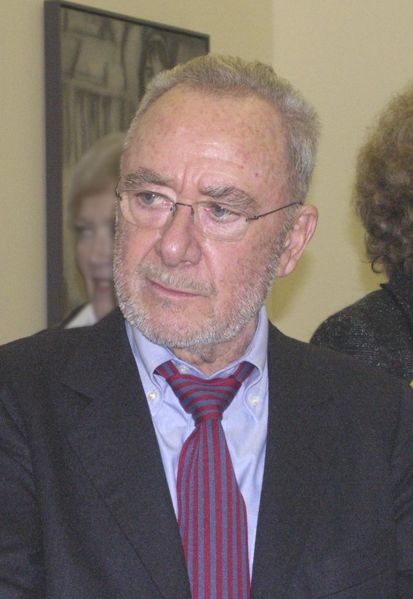
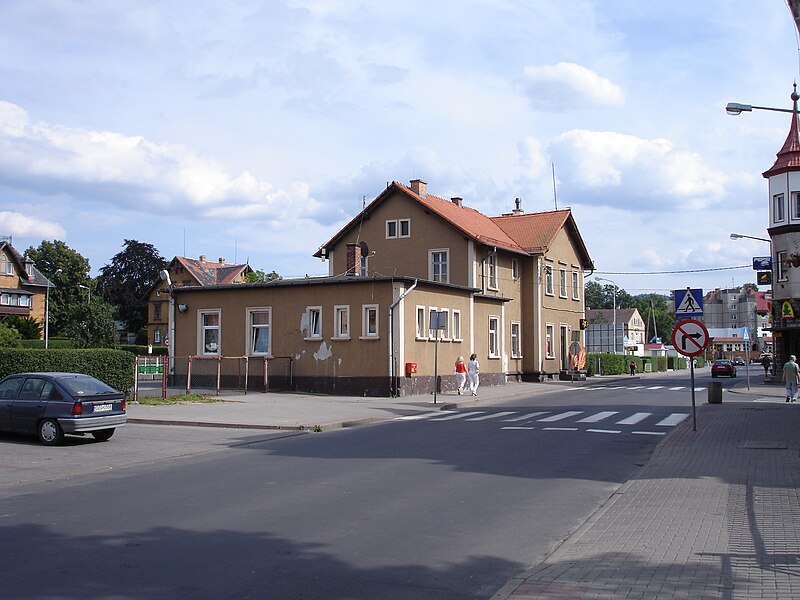
 between 1949 and 1951, successively worked as an apprentice with a sign painter, a photographer and as a painter. In 1950 his application for membership in the Hochschule für Bildende Künste Dresden (Dresden University of Visual Arts, founded in 1764) was rejected as "too bourgeois". He finally began his studies at the Dresden Academy of Fine Arts in 1951. His teachers were Karl von Appen, Heinz Lohmar and Will Grohmann
between 1949 and 1951, successively worked as an apprentice with a sign painter, a photographer and as a painter. In 1950 his application for membership in the Hochschule für Bildende Künste Dresden (Dresden University of Visual Arts, founded in 1764) was rejected as "too bourgeois". He finally began his studies at the Dresden Academy of Fine Arts in 1951. His teachers were Karl von Appen, Heinz Lohmar and Will Grohmann

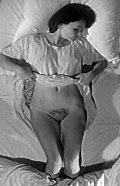 portraits of the East German actress
portraits of the East German actress Angelica Domroese
Angelica Domroese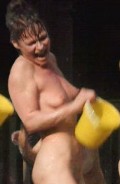 and of Richter's first wife Ema), on various self portraits and furthermore, on a panorama of Dresden with the neutral name Stadtbild (Townscape, 1956).
and of Richter's first wife Ema), on various self portraits and furthermore, on a panorama of Dresden with the neutral name Stadtbild (Townscape, 1956). Richter taught at the Hochschule für bildende Künste Hamburg, and the Nova Scotia College of Art and Design, as a visiting professor, and returned to the Düsseldorf Art Academy in 1971, where he was a professor for over 15 years.
Richter taught at the Hochschule für bildende Künste Hamburg, and the Nova Scotia College of Art and Design, as a visiting professor, and returned to the Düsseldorf Art Academy in 1971, where he was a professor for over 15 years.



 in Utrecht under the title "Atlas der Fotos und Skizzen," it included 315 parts. The work has continued to expand, and was exhibited later in full form at the Lenbachhaus in Munich in 1989, the Museum Ludwig in Cologne in 1990, and at Dia Art Foundation in New York in 1995.
in Utrecht under the title "Atlas der Fotos und Skizzen," it included 315 parts. The work has continued to expand, and was exhibited later in full form at the Lenbachhaus in Munich in 1989, the Museum Ludwig in Cologne in 1990, and at Dia Art Foundation in New York in 1995.
 commissioned Richter to make a portrait of them
commissioned Richter to make a portrait of them ... The comparison with Friedrich makes excellent sense. Not only is Friedrich foundational to the very notion of German landscape painting, but each artist spent important years of his life in Dresden. Indeed, several critics have concluded that, despite being separated by more than a century, the two share a similar experience of nature."In 1972 Richter had embarked on a ten-day trip to Greenland, originally having intended to be accompanied by his friend Hanne Darboven, but eventually journeying alone. His intention was to experience and record the desolate arctic landscape. In 1976 four large paintings, each titled Seascape emerged from the Greenland photographs.
... The comparison with Friedrich makes excellent sense. Not only is Friedrich foundational to the very notion of German landscape painting, but each artist spent important years of his life in Dresden. Indeed, several critics have concluded that, despite being separated by more than a century, the two share a similar experience of nature."In 1972 Richter had embarked on a ten-day trip to Greenland, originally having intended to be accompanied by his friend Hanne Darboven, but eventually journeying alone. His intention was to experience and record the desolate arctic landscape. In 1976 four large paintings, each titled Seascape emerged from the Greenland photographs.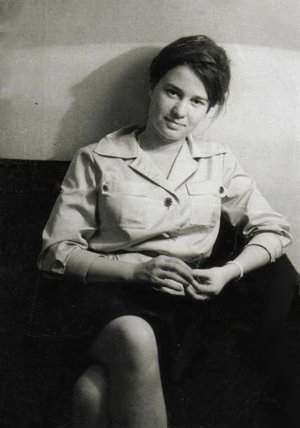 during her years as a radical journalist; on photographs of the arrest of Holger Meins; on police shots of Gudrun Ensslin in prison; on Andreas Baader's bookshelves and the record player to conceal his gun; on the dead figures of Meinhof, Ensslin, and Baader; and on the funeral of Ensslin, Baader, and Jan-Carl Raspe.
during her years as a radical journalist; on photographs of the arrest of Holger Meins; on police shots of Gudrun Ensslin in prison; on Andreas Baader's bookshelves and the record player to conceal his gun; on the dead figures of Meinhof, Ensslin, and Baader; and on the funeral of Ensslin, Baader, and Jan-Carl Raspe. .In May 2002, Richter photographed 216 details of his abstract painting no. 648-2, from 1987. Working on a long table over a period of several weeks, Richter combined these 10 x 15 cm details with 165 texts on the Iraq war, published in the German FAZ newspaper on March 20 and 21. This work was published in 2004 as a book entitled War Cut.
.In May 2002, Richter photographed 216 details of his abstract painting no. 648-2, from 1987. Working on a long table over a period of several weeks, Richter combined these 10 x 15 cm details with 165 texts on the Iraq war, published in the German FAZ newspaper on March 20 and 21. This work was published in 2004 as a book entitled War Cut.


